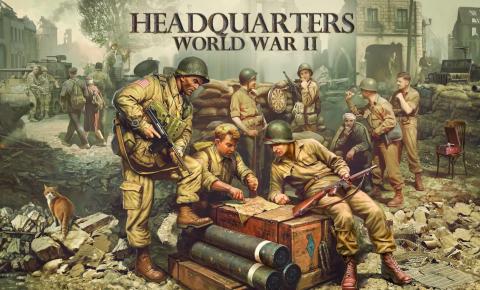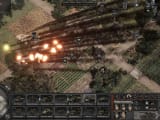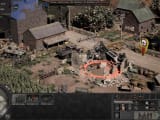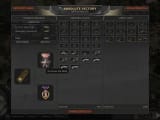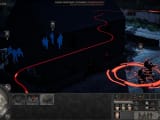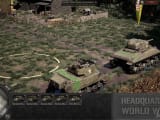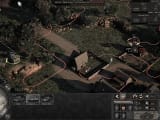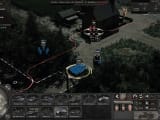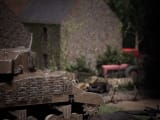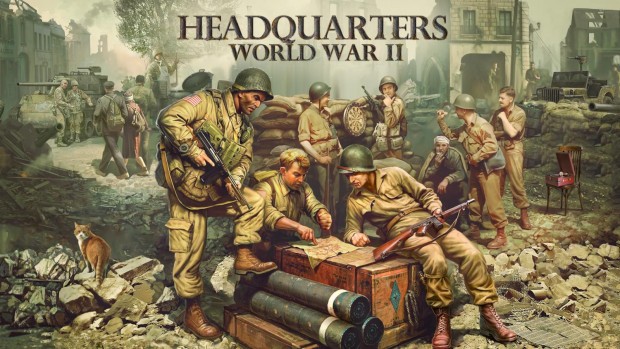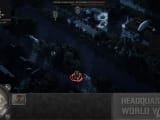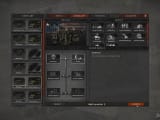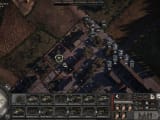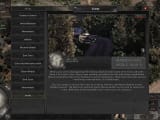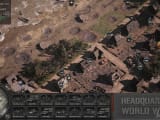I pushed the tank too far ahead of my main force. Shermans might be plentiful and relatively reliable in battle but this one crumpled pretty fast when ambushed by both a Panzer IV and a classic anti-tank gun. I think I can save it next turn and replenish its crew after that but it might require drawing fire with other units, which might lead to losses that I don’t really need.
Some good spotting from my own scouts means I can direct both my self-propelled artillery to strike at two Nazi infantry squads that were busy using buildings as cover to launch an ambush on my own advancing squads. A machine gun team then eliminates the first of them but my own G.I.s fail to take out the second.
The Germans reveal a few surprises during their own turn. They push forward not one but two tanks, which is an issue given that I lack suitable defenses in that corner of the village. They also have some indirect fire, probably mortars, that accurately strike my infantry. So, I use my actions to pull back a little and then consolidate. I don’t want to be surprised by a Tiger I haven’t yet seen so I will wait for air recon to be available before considering a push.
Headquarters: World War II is developed by Starni Games and published by Slitherine Ltd. I played on Steam on the PC, the only platform on which it is offered. The game uses a turn-based structure and pretty classic strategy mechanics.
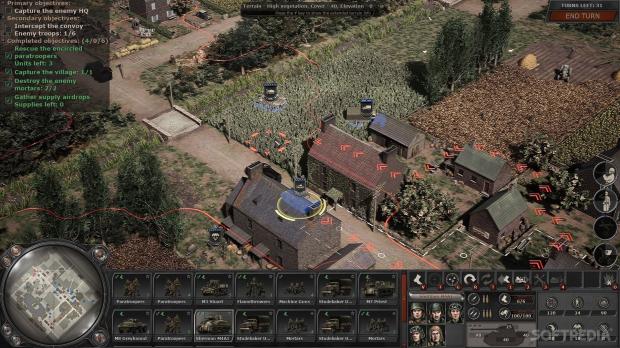
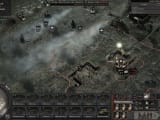
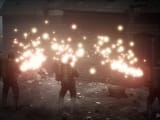
The battlefield is Normandy after the Allies landed in 1944. World War II is moving slowly toward its conclusion but there’s still a lot of hard fighting to be done. The game delivers three campaigns, playing as the United States, the United Kingdom, and Nazi Germany. All are centered around a player battlegroup and have narrative elements.
Players familiar with the Overlord campaign, either via history books or popular media, will be able to predict many of the game’s story beats. It mostly works, even if it is filled with familiar beats. The mission briefings and associated descriptions are decently written. Gamers can use them as springboards to learn more about the many bloody engagements in Normandy.
Headquarters: World War II is a turn-based tactical wargame. Each player unit, representing a vehicle or an infantry squad, has a limited number of movements, action and reaction points. These are used to guide them around the map as they spot enemies, occupy buildings, attack, and deploy their special abilities, all in the service of fulfilling objectives before the turn limit.
When the opposing force acts, overwatch allows units to react. This makes well-prepared defensive positions hard to crack, especially if they have overlapping fields of fire and if units are well hidden. Even advancing forces need to be prepared to deal with sharp, often doomed counterattacks that can keep them from reaching objectives.
Headquarters: World War II aims to get as close to the real world as possible. Armor for vehicles is calculated depending on attack angles. All incoming fire can affect the morale of a unit. High ground offers aiming advantages and tanks tend to have problems engaging in the narrow streets of small French towns. Unit speed matters and it’s suicidal to push forward without some solid scouting.
Heavy ordnance, including projectiles from tanks and artillery, will interact with the environment and create destruction. It’s often a better idea to demolish a house with an infantry squad inside than sacrifice one’s own units to clear it. Urban combat is the most interesting part of Headquarters: World War II, filled with complex tactical puzzles and deadly short-range battles.
Real world combat cannot be reduced to simple calculations, no matter how detailed. Randomness exists and will lead to surprises. To keep players from being too cautious, the game gives them core force units, which get replaced after each battle and will gain abilities and veterancy, and scenario-specific ones, inherently more disposable.
Headquarters: World War II asks its players to replicate real-world tactics, carefully pushing toward objectives while conserving strength and making sure they have an operational reserve capable of reacting to surprises. Something as small as a tank burning in the wrong place can derail a carefully planned move.
Sure, the balance isn’t perfect. Tanks, despite the fact that losing crew limits their capabilities, are a little too resilient, especially given that gamers can bring in reinforcements via special ability. Headquarters also doesn’t fully reflect the extensive aerial dominance the Allies enjoyed. But these are small issues, in part linked to the need to create balanced and interesting combat scenarios.
Apart from the three campaigns, each featuring nine engagements, players can engage in skirmishes, choosing all aspects of the battle. The game also features an editor, giving players a simple way to create their own scenarios. The multiplayer side of the tactical experience allows up to four players to fight on their own or in teams, in three ways: hotseat, classic live multiplayer, and an asynchronous mode using Slitherine’s infrastructure.
Headquarters: World War II is a good-looking video game, which insists on inserting action shots when a unit does something special (this can be tweaked in the Options). The developers have re-created historical forces pretty closely and the towns and fields where engagements take place are beautiful, even after players start demolishing houses and punching holes through walls.
The title’s interface resembles other titles in the genre, which makes it easy to get info and plan turns. The music works in the classic heroic World War II registers and can become boring after a while. Combat sounds good, although the unit barks, and the voice briefings can sound a little amateurish.
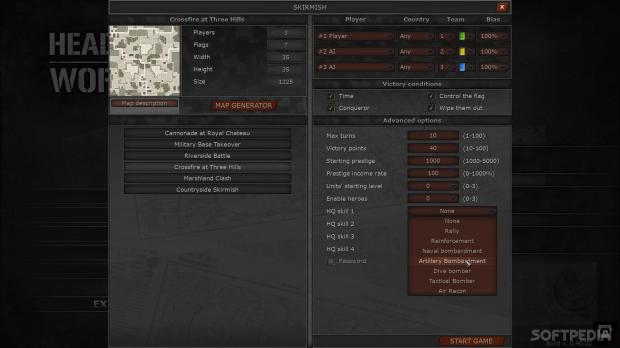
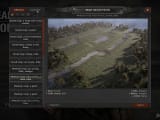
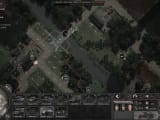
The Good
- Realistic turn-based combat
- Three core campaigns
- Destructible battlefields
The Bad
- Overlord once again
- Limited number of core units
- Unit voice work
Conclusion
The game also gives players the tools to create their own battles, both against the computer and other humans, and has a good editor. I hope Starni Games uses the same system to cover less well-known World War II operations. Headquarters: World War II is a compact and engaging wargame with plenty of attention to detail.
Review key provided by the publisher.
 14 DAY TRIAL //
14 DAY TRIAL // 